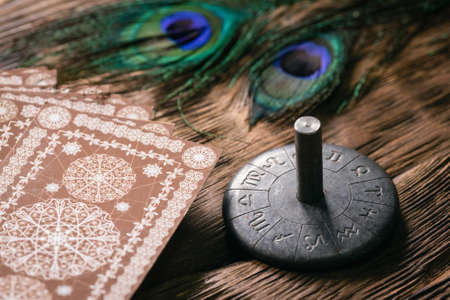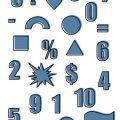Introduction: Astrology Meets British Tradition
Astrology, with its intricate symbols and celestial patterns, has long served as a guiding light for those seeking understanding of life’s mysteries. In Britain, where tradition and practicality often walk hand in hand, the interpretation of birth chart houses can be uniquely enriched by drawing upon classic British tools and sensibilities. This practical guide invites you to explore how time-honoured instruments—such as the humble magnifying glass, the trusted almanac, and the enduring wisdom of British folklore—can illuminate the meanings behind your astrological houses. By weaving together the structured logic of British craftsmanship with the intuitive art of astrology, we create an approach that is both grounded and insightful. Whether you are new to astrology or seasoned in reading charts, embracing these traditional methods will help you cultivate a deeper connection to your personal chart and the storied landscape of British culture itself.
2. Understanding the Twelve Houses: Foundations and Meanings
To truly appreciate the art of reading your birth chart using traditional British sensibilities, it is crucial to grasp the essence of each astrological house. The twelve houses in astrology may be likened to the twelve rooms of a stately English manor, each with its distinct character, purpose, and atmosphere. By exploring these houses through familiar British analogies and everyday situations, you can bring clarity and relevance to your chart interpretation.
| House | Traditional Meaning | British Analogy or Life Example |
|---|---|---|
| 1st House | The Self, Appearance, First Impressions | The grand front entrance – how you present yourself as guests arrive at your home. |
| 2nd House | Personal Values, Finances, Possessions | Your larder or pantry – where you store your resources and determine your sense of comfort. |
| 3rd House | Communication, Siblings, Short Journeys | The drawing room – lively conversations with neighbours over a cup of tea. |
| 4th House | Home, Roots, Family Heritage | The hearth or family parlour – the heart of the home where family traditions are upheld. |
| 5th House | Creativity, Romance, Children | The music room or nursery – spaces filled with laughter, playfulness, and artistic pursuits. |
| 6th House | Daily Work, Health, Service | The kitchen or scullery – the engine room of daily routines and practical service. |
| 7th House | Partnerships, Marriage, Open Enemies | The formal dining room – where alliances are forged over meals and agreements are made. |
| 8th House | Shared Resources, Transformation, Inheritance | The estate office or vault – matters of legacy, joint finances, and family secrets. |
| 9th House | Philosophy, Higher Learning, Travel | The library – filled with books from travels abroad and debates on philosophy over port. |
| 10th House | Career, Reputation, Public Standing | The great hall – where achievements are displayed for all to see; your standing in the village. |
| 11th House | Friendships, Hopes & Dreams, Groups | The garden party – gatherings among friends under bunting; shared aspirations flourish here. |
| 12th House | Subconscious, Solitude, Secrets | The attic or cellar – quiet retreats for reflection or places where old memories are tucked away. |
The houses act as stages upon which the planets perform their unique roles. By interpreting each house with traditional British imagery in mind—whether it’s the comforting glow of a fireside chat or the dignified airs of a country manor—you invite both warmth and depth into your understanding of astrology. This method fosters a genuine connection between ancient wisdom and modern daily life in Britain’s ever-charming landscape.
![]()
3. Essential British Tools for Chart Reading
When seeking to unlock the mysteries of your birth chart houses, drawing upon the familiar objects and customs of traditional British life can provide practical insights. Let us consider how everyday items — such as the humble teapot, the cherished garden, and the trusty walking stick — can serve as meaningful metaphors for understanding the distinct qualities each house holds within your natal chart.
The Teapot: A Symbol of Containment and Sharing (House IV)
In many a British home, the teapot is more than a vessel; it represents comfort, gathering, and the warmth of domestic life. When we look at House IV, the foundation of our roots and family, imagine it as your own teapot: it contains your inner world and heritage, gently infusing your life with memories and traditions that shape who you are.
The Garden: Growth, Care, and Community (House VI and XI)
The British garden is a sanctuary — a space cultivated with patience, care, and communal effort. House VI speaks to daily routines and service, much like tending to one’s plants with regular devotion. Meanwhile, House XI reflects friendships and collective endeavours; think of neighbours gathered at the allotment, sharing advice and harvests. Your chart’s houses can be seen as various corners of this garden, each requiring attention and yielding its unique fruits.
The Walking Stick: Guidance Along Life’s Path (House IX)
For centuries, the walking stick has accompanied Britons on their journeys through town and countryside alike. In astrological terms, House IX pertains to higher learning, exploration, and philosophy — the walking stick here symbolises support as you traverse unfamiliar terrain in pursuit of wisdom. It reminds us that tradition offers both stability and encouragement on life’s grand adventure.
Bringing Metaphors into Practice
By envisioning your birth chart through these classic British tools, you ground abstract astrological concepts in tangible experience. Whether pouring tea for loved ones or strolling along hedgerows with a walking stick in hand, let these symbols guide your interpretation of each house’s role in shaping your life story.
4. Step-by-Step Guide: Interpreting Your Birth Chart Houses
Embarking on the interpretation of your birth chart houses is a quintessentially British pursuit—one that calls for patience, tradition, and a practical mindset. Below, you’ll find a methodical approach to reading your chart, peppered with British sensibility and respect for the time-honoured tools our ancestors cherished.
Understanding the Foundations
First, ensure you have your precise birth details (date, time, and location). For those in Britain, the use of a traditional ephemeris or an old-fashioned astrological almanac is highly recommended. Once your chart is drawn up, locate each of the twelve houses—a task often aided by the reliable British protractor and ruler for accuracy on printed charts.
The Significance of Each House: A British Perspective
The houses symbolise various realms of life. Here’s a classic British guide to their meanings and how to interpret them:
| House Number | Traditional British Focus | Interpretation Tip |
|---|---|---|
| 1st House | The Self & Appearance | Your public persona—think of it as your “first impression” at a village fête. |
| 2nd House | Possessions & Values | Your approach to finances—akin to how one manages their allotment or family silver. |
| 3rd House | Communication & Local Affairs | Siblings, neighbours, and daily correspondence—imagine a bustling market day in your local town square. |
| 4th House | Home & Roots | The ancestral home and family—reflective of stately manors or humble cottages alike. |
| 5th House | Creativity & Leisure | Pleasures and pastimes—from Morris dancing to painting watercolours in the countryside. |
| 6th House | Work & Health | Your daily routine—like tending the garden or walking the dog on a misty morning. |
| 7th House | Partnerships & Marriage | Your approach to close relationships—think of the loyalty expected in a cricket team partnership. |
| 8th House | Transformation & Shared Resources | The management of shared assets and deep changes—much like dealing with inheritance law in Britain. |
| 9th House | Philosophy & Travel | Your quest for knowledge—whether through Oxbridge study or journeys abroad on a gap year. |
| 10th House | Status & Public Life | Your career and reputation—the legacy you leave, much like those commemorated on blue plaques across Britain. |
| 11th House | Friendships & Aspirations | Your social clubs and community causes—recalling the camaraderie of a local pub quiz team. |
| 12th House | The Subconscious & Solitude | Your inner world—solitary walks over rolling hills or reflective afternoons by the fire. |
A Methodical Approach: Reading Each House Step by Step
Selecting Traditional Tools
Begin with a well-drawn chart using classic British instruments: compass, ruler, and perhaps even parchment if you’re feeling nostalgic. Mark each house clearly. Refer to an ephemeris to identify planetary placements within these houses.
Step 1: Examine Planets Within Each House
Note any planets present in each house. Their presence brings emphasis to that area of life. For example, Mars in the 6th house may suggest a brisk approach to work—a trait admired in many British workplaces.
Step 2: Consider Rulerships
Identify which sign rules each house cusp using traditional tables. In true British fashion, consult established astrological references rather than relying solely on digital methods.
Step 3: Synthesize the Information
Meld together planet placements, ruling signs, and aspects. Interpret their combined influence through a lens that values heritage, continuity, and understated confidence—so characteristic of British culture.
Troubleshooting Common Issues
If you encounter ambiguity (as sometimes happens when deciphering Mercury’s messages), refer back to traditional texts such as William Lilly’s Christian Astrology. The wisdom passed down through generations often holds the key.
The Value of Patience and Reflection
A final word: British astrology favours patience over haste. Allow time for reflection after each interpretive session—perhaps over a pot of tea or during an evening walk along cobbled streets. This measured approach ensures that each insight gained becomes truly meaningful within the tapestry of your life.
5. Practical Examples: Chart Readings in a British Context
To truly appreciate the art of reading birth chart houses, it is most instructive to observe how these interpretations unfold within everyday British life. By examining a series of illustrative case studies, we can see how traditional tools and local culture bring the birth chart to life, anchoring celestial insights firmly in the familiar.
The First House: Identity at Afternoon Tea
Consider Sarah, a Londoner whose Ascendant falls in Virgo. At her weekly afternoon tea—a cherished British tradition—Sarah’s meticulous nature is evident as she arranges scones and cups with precision. The First House reveals not only her outward manner but also her reputation for reliability amongst friends, echoing the practical elegance so often admired in British society.
The Fourth House: Family Roots in the English Countryside
For Edward, whose Fourth House is ruled by Cancer, his connection to his ancestral cottage in Yorkshire is profound. Traditional house readings highlight his deep sense of belonging and responsibility toward his family estate. The Fourth House illuminates how heritage and home intertwine, much like the enduring stone walls that shape the English landscape.
The Seventh House: Partnership Reflected at a Village Fête
When analysing a partnership, we look to Jane and Thomas, partners who first met at their local village fête in Kent. With Libra ruling their Seventh House, their relationship thrives on shared values and fair play—mirrored in their joint efforts organising the annual tombola, a pillar event of rural community spirit.
The Tenth House: Career Aspirations on the High Street
In matters of vocation, David’s Tenth House in Capricorn reveals ambition rooted in tradition. As proprietor of a historic bookshop on Bath’s high street, he upholds time-honoured business practices while adapting to modern needs—a classic blend of old and new that characterises much of British professional life.
Bringing the Houses Home
Through these distinctly British scenarios, we see how birth chart houses are not abstract concepts but living stories woven into daily experience. By applying traditional tools and honouring local customs, each house offers practical guidance—reminding us that astrology’s wisdom is always close at hand, whether over tea or amidst rolling green fields.
6. Tips for Deepening Your Practice: Wisdom from British Tradition
For those wishing to cultivate a richer understanding of birth chart houses, the British tradition offers both time-honoured wisdom and some rather unique tools. The following suggestions, drawn from generations of British astrologers and wise folk, will help you to refine your interpretive skills and bring greater depth to your readings.
Embrace the Power of Journalling
Britons have long valued the written word—consider keeping an astro-journal, much like a Victorian commonplace book. Record your observations, predictions, and reflections on each house as you encounter them in your life or in the lives of others. This practice not only encourages self-reflection but also builds a personal repository of insight over time.
Study by Candlelight: Creating Sacred Space
Borrowing from old English customs, try studying your chart under the gentle glow of candlelight. This small ritual can foster a sense of reverence and quiet focus, reminiscent of scholars poring over star charts in ancient libraries. It’s a simple way to invite stillness and intention into your practice.
The Art of Tea and Contemplation
No guide rooted in British culture would be complete without mention of tea. Set aside time for an unhurried cup while contemplating the meaning of a particular house. Allow the process to be meditative—much as one might approach reading tea leaves (tasseography), let intuitive insights come gently as you sip.
Learn from Local Lore
Each region across Britain is rich with its own stories and superstitions about fate and fortune. Delve into local folklore or connect with community elders for tales that may illuminate your understanding of certain houses—such as family traditions linked to the Fourth House, or village legends about prosperity echoing through the Second.
Incorporate Traditional Tools
Consider using traditional British divinatory aids alongside your astrological work. Runes carved from yew or oak, or even a simple pendulum fashioned from Cornish tin, can be used to clarify ambiguous interpretations or add another layer to your readings. These tools ground your study in the heritage of British mysticism.
Patience as Virtue
Finally, remember that the British temperament favours patience and measured progress. Give yourself time to grow; allow interpretations to mature like a fine English ale. By weaving together these venerable practices with your chart work, you’ll develop a uniquely grounded and profound relationship with astrology—one steeped in the wisdom of British tradition.


